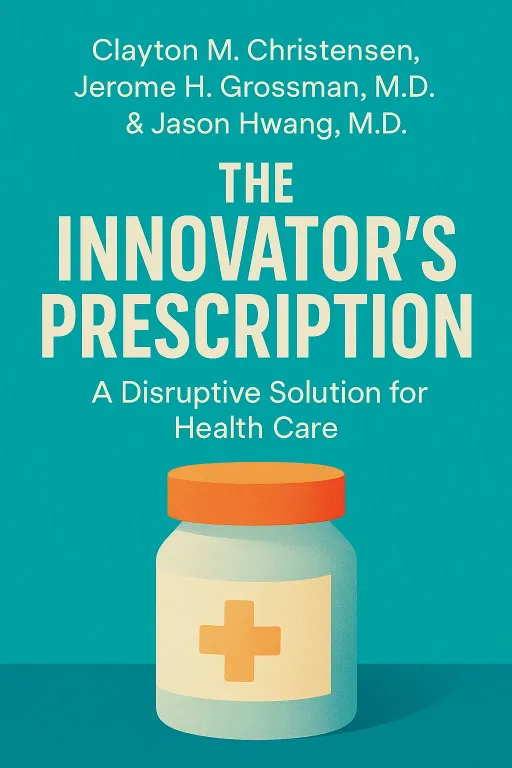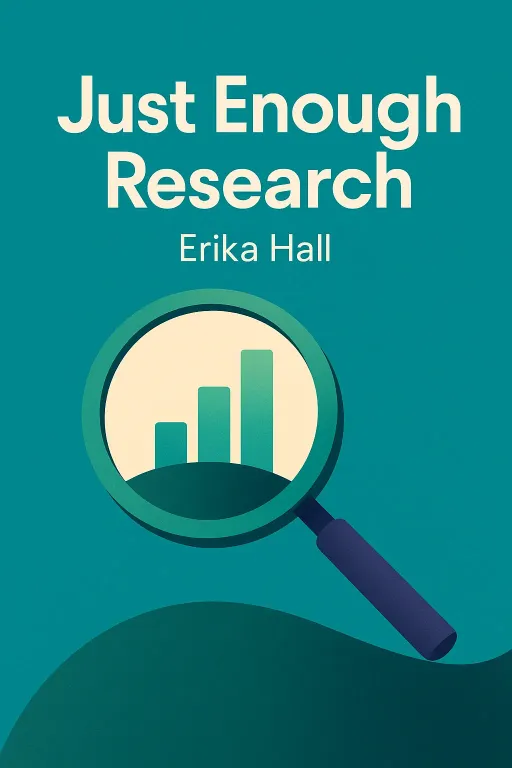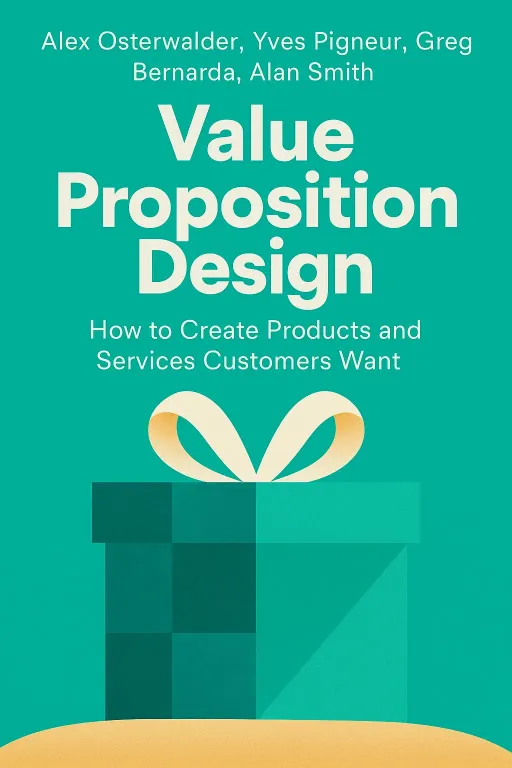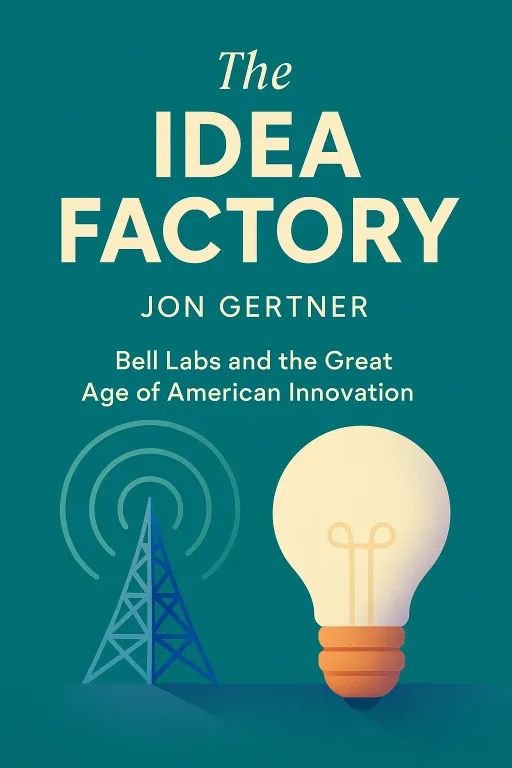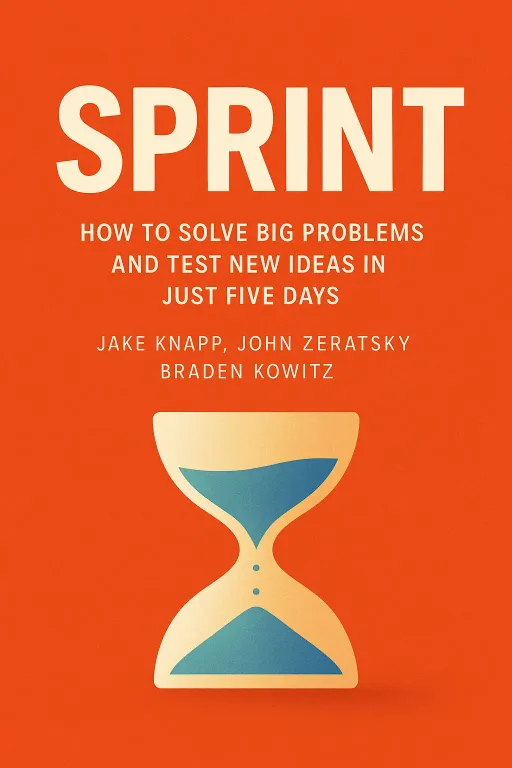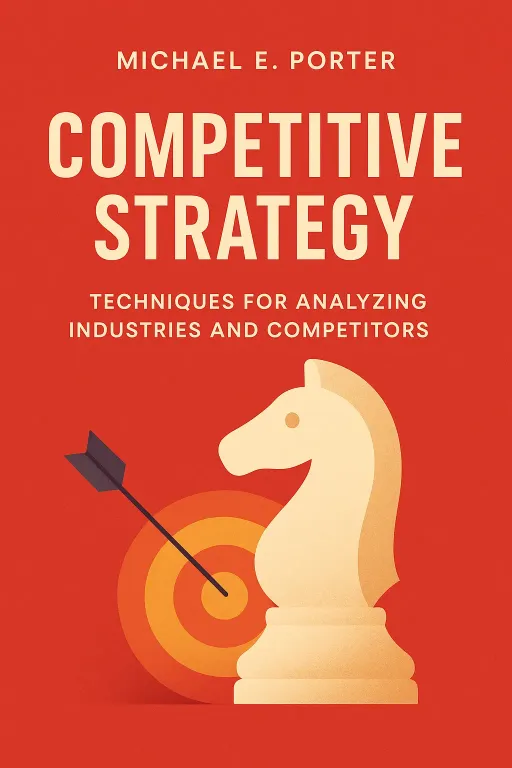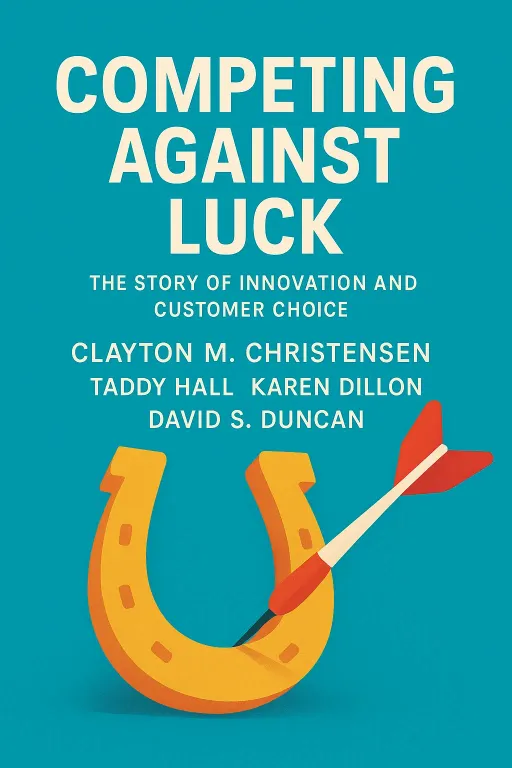
The Job, Not the Tech: Cracking the Code of Customer-Centric Innovation
10 minGolden Hook & Introduction
SECTION
Nova: Marvin, as a researcher in tech, you've seen it happen, right? A team spends months, maybe years, building a product. It's technically elegant, packed with features... and it lands with a thud. No one uses it. It's the innovator's nightmare. What if the problem isn't the technology, but the questions we're asking in the first place?
Marvin: It's a painfully familiar story, Nova. You have all this data that says customers want Feature A and Feature B. You build them perfectly. And then... crickets. It makes you question the whole process. Are we just getting good at building the wrong things?
Nova: That is the exact question at the heart of Clayton Christensen's brilliant book, "Competing Against Luck." It argues that true innovation isn't about luck or even just brilliant technology. It's about a fundamental shift in perspective. And that's what we're exploring today.
Marvin: I'm ready. I think anyone in a creative or technical field is searching for a better way to connect their work to real-world impact.
Nova: I love that. So, today we'll dive deep into this from two perspectives. First, we'll solve the famous 'Milk Shake Mystery' to understand what a 'Job to Be Done' actually is. Then, we'll look at how visionary organizations build their entire strategy around this concept, transforming their products into services that enable real human progress.
Deep Dive into Core Topic 1: The 'Why' Behind the Buy: The Milk Shake Dilemma
SECTION
Nova: So, let's start with that mystery. It’s one of the most famous stories in modern business, and it revolves around a simple, everyday product: a fast-food milk shake. A major chain wanted to boost their milk shake sales. So they did what any company would do. They ran focus groups.
Marvin: Let me guess. They asked people, "How can we make our milk shakes better?"
Nova: You got it. And people gave the expected answers: "Make it more chocolatey," "cheaper," "thicker," "add more chunks of stuff." The company diligently followed the feedback, improved the product along those lines, and... absolutely nothing happened to sales. They were stumped.
Marvin: Because they were improving the product's attributes, but they didn't know people were buying it in the first place. They had data, but no insight.
Nova: Precisely. So, Christensen's research team took a different approach. They decided to just watch. They stood in one of the restaurants for 18 hours, just observing. And they noticed something strange. A surprising number of milk shakes were sold before 8:30 in the morning. The buyers were almost always alone, they were commuters, and they only bought the milk shake.
Marvin: That's an anomaly. That's the kind of thing a good researcher looks for. It doesn't fit the pattern of 'kids' treat' or 'dessert.'
Nova: Exactly. So they started interviewing these morning customers, but with a different question. Not "How can we improve this?" but "What job were you trying to get done for yourself that caused you to come here and hire a milk shake?"
Marvin: Hire a milk shake. I love that phrasing. It's not a purchase; it's a contract for a service.
Nova: It is! And the answers were fascinating. The job was this: "I have a long, boring commute to work. I'm not really hungry yet, but I know I'll be hungry by 10 a. m. I need something that I can eat with one hand while I drive, and something that will keep me engaged and make the commute less dull."
Marvin: Wow. So when you frame it like that, the competition isn't just another restaurant's milk shake.
Nova: Right! They asked, "What else have you hired for that job?" The answers were things like a banana, which was gone in two minutes and didn't solve the boredom problem. A doughnut, which left crumbs and sticky fingers all over the steering wheel. A bagel, which was dry and required two hands to put cream cheese on. Suddenly, the humble milk shake looked like a genius solution. It took twenty minutes to suck up through a thin straw, it was tidy, and it filled them up.
Marvin: That's a powerful reframe. Because it completely upends how we do user research in tech. We send out surveys asking, "What features do you want?" which is exactly what the restaurant did. They asked, "Do you want it more chocolatey?" We're getting correlational data—what this demographic they want—not causal data. Christensen's team found the 'why' by observing the struggle.
Nova: They stopped looking at the customer's attributes and started looking at the customer's. And that's the heart of a Job to Be Done. It's the progress a person is trying to make in a specific context. And by the way, they also found a second, completely different job in the afternoon: a parent buying a milk shake for their child. The job there was, "I want to be a good parent, give my kid a treat, and have a quick, guilt-free moment of connection." For that job, the milk shake was competing with a toy from the toy store.
Marvin: And the needs are opposite! The parent wants a smaller, quicker-to-finish shake, while the commuter wants a big, slow one. If you just average the feedback, you get a mediocre product that serves neither job well. This also redefines the competition. In tech, we think our competitor is another app with similar features. But for the commuter, the milk shake's competitor was a banana. So, for a productivity app, the real competitor might be a pen and paper, or even just deciding not to do the task at all. That's a huge strategic shift.
Deep Dive into Core Topic 2: Designing for Progress, Not Just Products
SECTION
Nova: You've hit on the perfect transition, Marvin. Once you understand the 'job,' the next step isn't just to tweak the product, but to design the entire to help the customer make progress. And there's no better example of this than what Southern New Hampshire University, or SNHU, did.
Marvin: I'm not familiar with them.
Nova: In the early 2000s, you wouldn't have been. They were a small, struggling, second-tier college in New England. Their new president, Paul LeBlanc, was introduced to this Jobs to Be Done theory and had a revelation. He realized SNHU was trying to serve two completely different students with one model.
Marvin: The milk shake problem, but for education.
Nova: Exactly. Job number one was for the traditional 18-year-old student. Their job was the classic "coming-of-age college experience"—dorms, football games, finding yourself. But there was a second, growing group of students: 30-something adults, often with kids and a full-time job, who were enrolling in their fledgling online program.
Marvin: Their job isn't 'finding themselves.' Their job is probably something much more specific and urgent.
Nova: You nailed it. Their job was, "I feel stuck. I need a credential to get a better job and provide for my family, but I have no time. Help me get this done as fast and painlessly as possible so I can make progress in my life." For them, a beautiful campus was irrelevant. A winning football team was a distraction.
Marvin: So what did SNHU do?
Nova: They went all-in on the adult learner's job. They redesigned their entire online experience. When a prospective student inquired online, SNHU's goal was to call them back in under ten minutes. They created a team whose sole job was to hunt down old college transcripts for the student, even paying the fees. They built a 24/7 tech support and tutoring system. Every single process was optimized to remove friction and anxiety for a busy adult. They weren't selling courses; they were selling confidence and a faster path to a new future.
Marvin: This is where it connects to leadership for me. The SNHU president, Paul LeBlanc, gave his team a 'commander's intent.' The job wasn't 'increase enrollment'; it was 'help this busy adult achieve a life-changing credential with as little friction as possible.' Every decision, from marketing to financial aid, could be measured against that job. It aligns everyone and gives their work a powerful sense of purpose.
Nova: And it's not just about service industries. Think about Intuit's QuickBooks. The founder, Scott Cook, realized that most small business owners didn't to become accountants. The existing software was powerful but complex, built for accountants. The real job for the business owner was, "Help me feel in control of my finances so I can get back to my real work."
Marvin: The progress they're seeking is a feeling of empowerment and control. The product is just the vehicle. So Intuit's task wasn't to build better accounting software, but to build a better way to feel in control.
Nova: Exactly! So they designed QuickBooks to the accounting. They used simple language, automated as much as possible, and made it feel intuitive. They solved the job, and in doing so, they dominated the market.
Marvin: This is what I think people like Steve Jobs understood intuitively. The iPod's job wasn't to 'play MP3s.' It was to 'put 1,000 songs in my pocket.' The job description itself was the marketing and the design spec all in one. It's about the human outcome, not the technical function.
Synthesis & Takeaways
SECTION
Nova: That's the perfect summary. So, we've seen how shifting our focus from 'what our product does' to 'what job our customer hires it for' changes everything—from marketing to product design to competitive analysis.
Marvin: It's a move from correlation to causation. From asking what people they want, to understanding what they do to make progress in their lives. And it gives you a North Star for innovation that isn't just the next shiny technology. It's a real, enduring human problem.
Nova: So for everyone listening, especially those in roles like Marvin's, who are building the future, here's the challenge.
Marvin: Exactly. The next time you're in a product meeting or a research review, I want you to try this. Ask the team: 'What is the real-life struggle we're trying to solve here? What progress are we enabling?' Forget the features for a moment and tell the story of the user's job. I guarantee it will lead to a more powerful, and ultimately more successful, conversation.
Nova: A fantastic, actionable takeaway. Marvin, this has been an incredibly insightful discussion. Thank you.
Marvin: The pleasure was all mine, Nova. It's given me a lot to think about.



